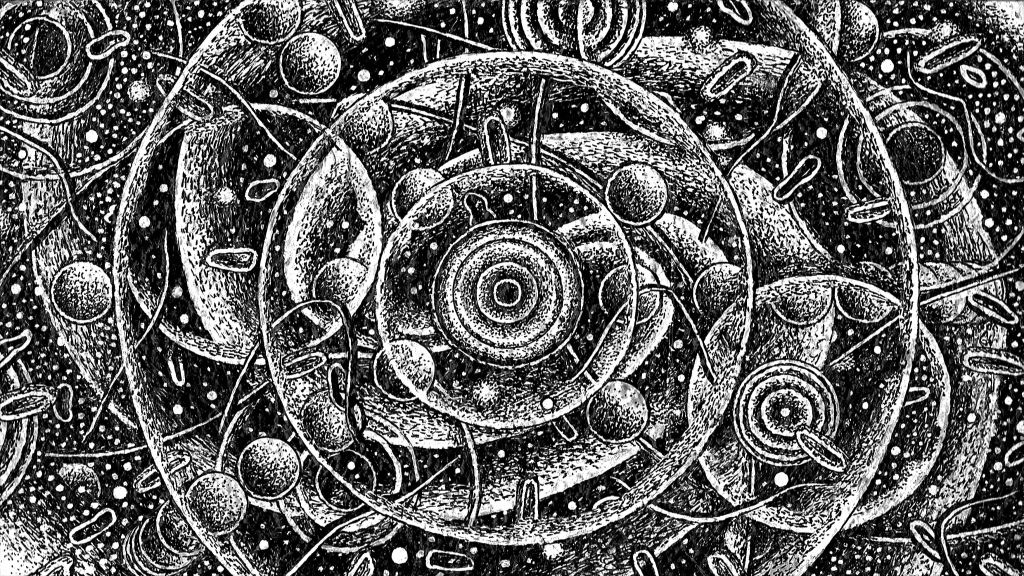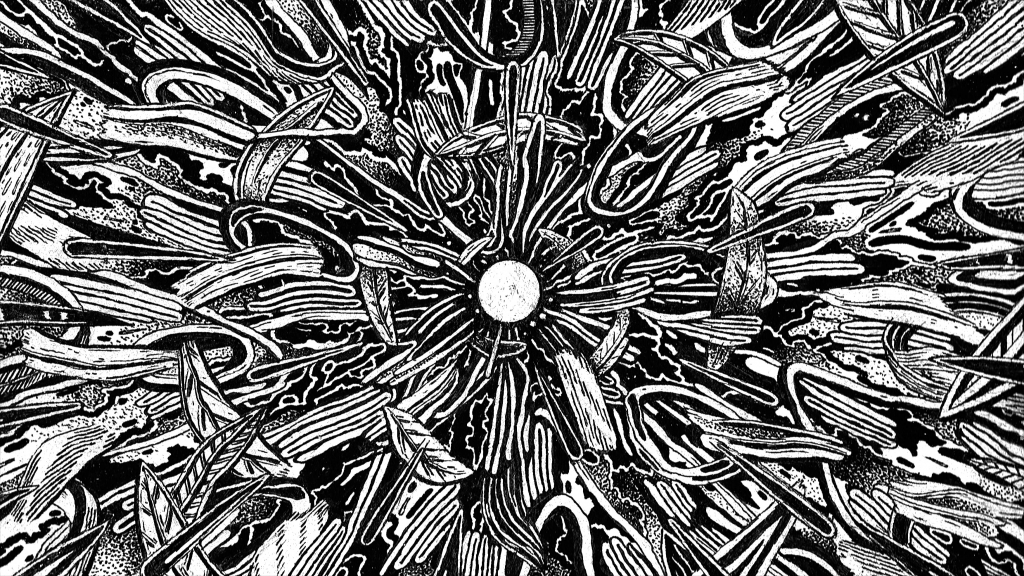
“Night Vision“
The NFT as a self-portrait rendered one frame at a time: The genesis piece of Jake Fried
Upon the simultaneous drop of the first note and opening frame of “Night Vision,” an experimental animation by Jake Fried, we are fully immersed within a black and white cinematic universe rich in texture and guided by a labyrinth of intricate geometric forms.
white-out. Bid on it here.
Fried anchors the narrative at the center of the composition, where different permutations of an eye guide our perspective through a sequence of terrestrial and celestial landscapes that has no definitive beginning or end. The presence of the eye reflects the artist, who meditates over the surface for an extended period of time and witnesses its evolution from a blank slate to sedimented layers of ink and white-out.
In conversation with SuperRare, Fried spoke to the cyclical nature of the work as a “mystery that unfolds and unlocks over time,” exploring every angle of the self from inner and outer spaces, and from the anatomical to the galactical. Along the edges of the frame, in our peripheral vision atmospheric layers expand and contract gradually moving toward the edges, filling the entire visual plane until the cycle begins again. The fluidity of motion and the rapid pace at which the animation plays, veils the complexity, rigor and time behind the process.
— Jake Fried
Working only with black ink and white-out, Fried uses a 9 x 12 inch surface area of Arches watercolor paper and implements a stop motion technique to present 24 frames per second by hand in the same tradition as a film camera. Thus 60 seconds of “Night Vision” presents a total of 1,440 unqiue frames. No frame is ever repeated twice.
Fried’s practice alludes to the avant-garde concept “la caméra-stylo” whereby the director handles the camera like a pen, writing with light. “Night Vision” puts a twist on the cinematic tradition as Fried uses ink and white out like a camera, transforming minimal materials into a multi-dimensional and sensory experience.


The sound design is crafted with the same methodical approach as the drawing, by implementing a series of layers. The initial tonality is laid down in editing software, flattened, exported and built upon until there’s no space left. Fried explains that “once a piece is done it’s almost like I can hear it in my head and I just have to realize it in real life. The way I compose sound design is like the way I draw as well – layering a lot of information on top of itself.”
The guiding tonality of the animation is in the dominant key of C Minor with accents of the breath, the heartbeat and ink scratching the surface of the paper. The result is both visceral and hypnotic and the sound design mirrors the gestures of the drawings even before our eyes can absorb all of the information as it unfolds.


Originally created in 2015 and featured as a Staff Pick on Vimeo, “Night Vision” has a renewed life in the NFT metaverse. The visual portal through which the viewer travels feels right at home on the blockchain. While the work exists digitally, its origins are physical. Fried suggests that the physicality of the work helps dictate its beginning and end.
“If the work wasn’t tactile or physical it would never end,” he says. “Really what ends the work is the surface of the drawing, the paper becomes so textured and impossible to work on anymore. So if you watch the piece, it starts out with a really clean piece of blank paper and by the end, it’s this mountain range of black ink and crusty surface and it just sort of runs away and I have to end it.”
A self-portrait ten months in the making, “Night Vision” is a meditation of hundreds of hours of nose to paper. It’s final physical state is an artifact while its digital manifestation is a palimpsest that actively explores the layers of creation.

A. Moret is an international arts contributor and curator. Her curiosity about the intersection of art and technology inspired the founding of Installation Magazine nearly a decade ago. As the Artistic Director and Editor-in-Chief she oversees all editorial, conducts interviews with artists around the world and develops enriching partnerships that make art a source of conversation and not intimidation. She is based in Los Angeles, CA.
Hash Recipes

Curated Conversations: ALIENQUEEN
SuperRare Labs Senior Curator An interviews ALIENQUEEN about psychedelics, death, and her journey in the NFT space.
Negative Space




Curated Conversations: ALIENQUEEN
SuperRare Labs Senior Curator An interviews ALIENQUEEN about psychedelics, death, and her journey in the NFT space.
Weekly Top 10




Curated Conversations: ALIENQUEEN
SuperRare Labs Senior Curator An interviews ALIENQUEEN about psychedelics, death, and her journey in the NFT space.

